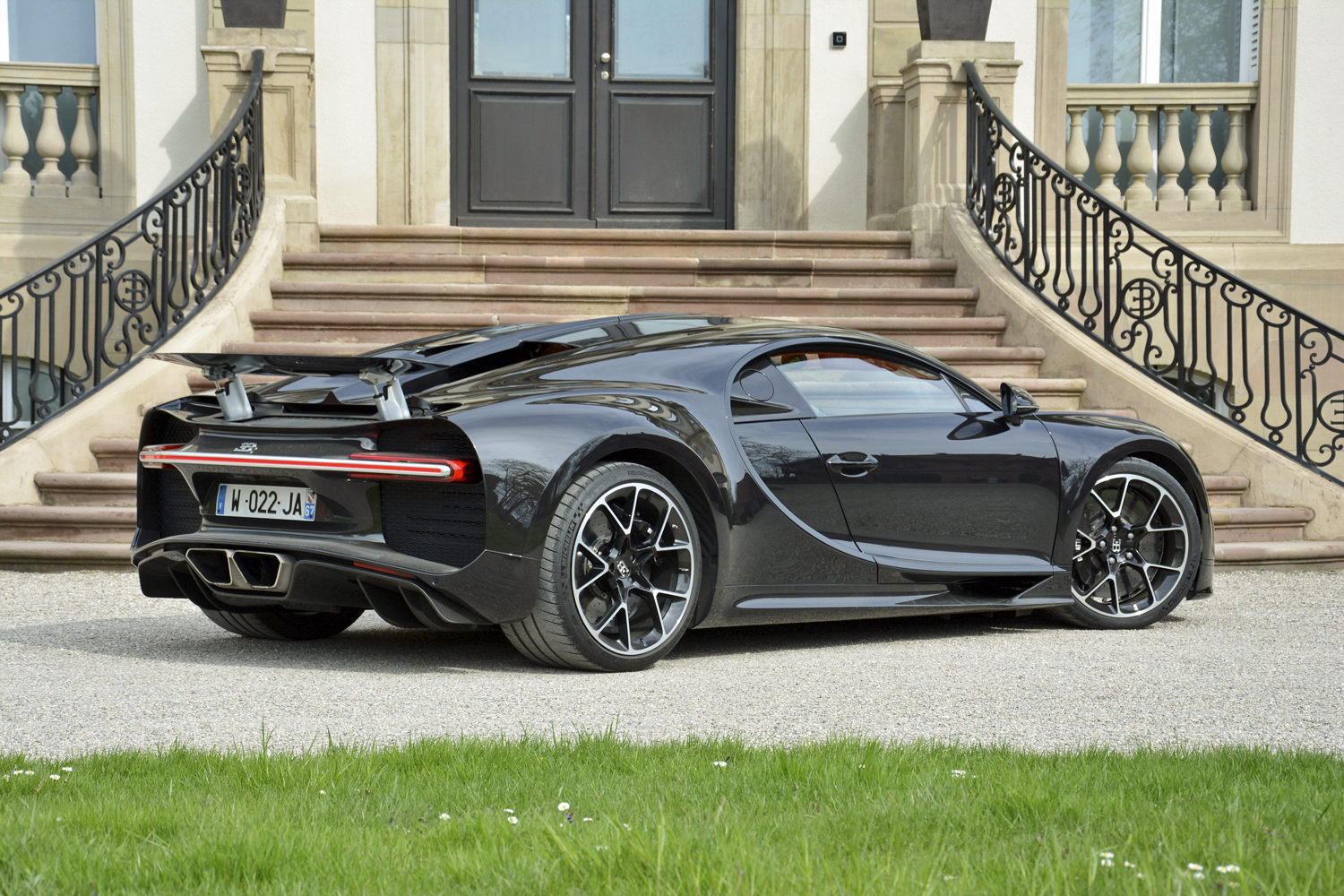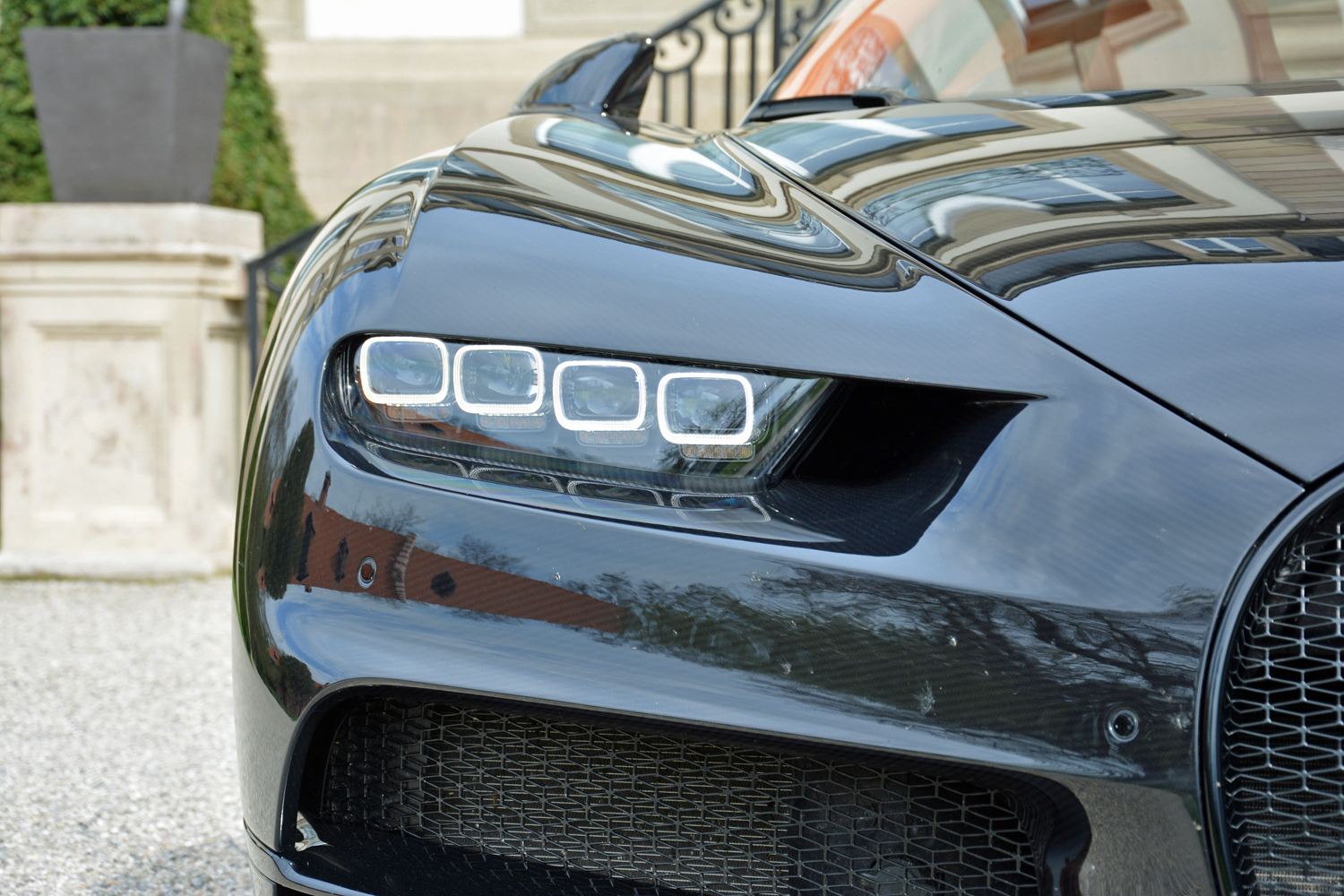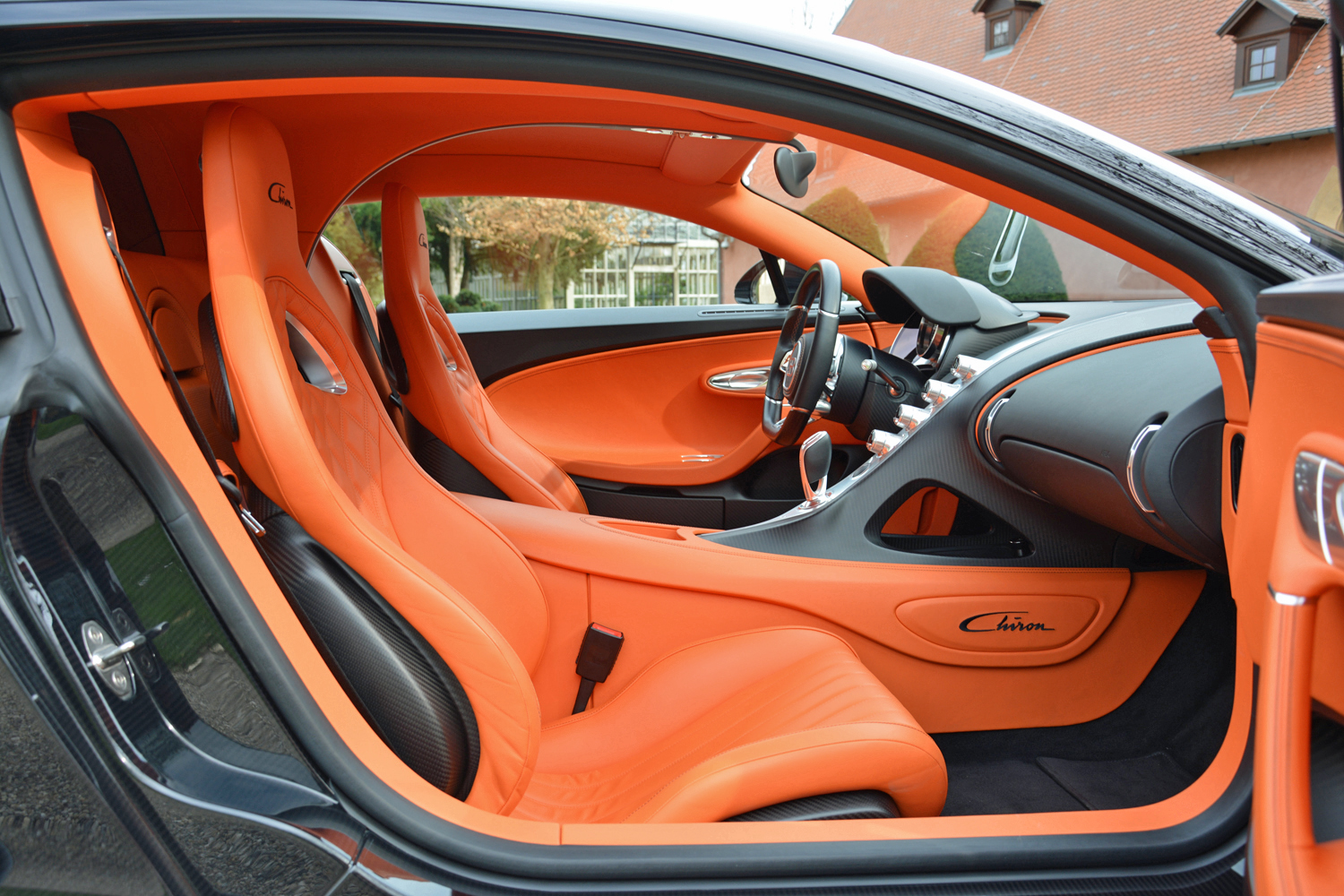
Before Bugatti’s Chiron slid out from beneath a white sheet at the 2016 Geneva Motor Show, it haunted the hills outside Molsheim, France, like the diabolical canine in Sir Arthur Conan Doyle’s Hound of the Baskervilles. Residents of the quiet Alsatian town Bugatti calls home occasionally heard the Chiron’s roar in the distance. They’d swap rumors about it at the bakery or at the pub, and some allegedly caught a vague glimpse of it at night, but no one could identify the type of beast they were dealing with.
Bugatti has since elucidated the mystery. It tests every car it builds for about 220 miles on the scenic roads around its historic headquarters, a policy which makes the Chiron a common sight for the locals. Digital Trends headed to Bugatti’s secretive factory in northwestern France, a stone’s throw from the border with Germany, to drive the Chiron on some of the roads it came to life on.
An Alsatian rendez-vous
Our test car waited patiently for us on Bugatti’s estate, parked between the former stables and the greenhouse the company’s founder had built in the 1920s to grow exotic fruit trees and basil. Black on orange – the color combination works better in person than it does in our images. Trust us. Look closely and you’ll notice the black is actually bare carbon fiber covered by several layers of clearcoat.
The quality of the materials used inside make the Chiron one of the most exquisite cars in the world. We encountered a lot of carbon fiber, which we expected, but also leather and numerous aluminum parts.
The Chiron has – gasp! – no touch screen. Instead, the center console consists of a thin, sloping metal panel with four dials that each incorporate a small digital screen and a button. Two high-resolution, driver-configurable screens located on either side of the analog speedometer display the infotainment options, navigation directions, and the various menus for connectivity and vehicle settings.
The Bugatti Chiron’s top speed, which we decided not to verify on public roads, lies somewhere north of 260 mph.
Bugatti told us it chose this design intentionally to make the Chiron’s cabin timeless; a dash-mounted screen immediately reveals a car’s age. The driver uses buttons on the steering wheel to change the information displayed on the screens. Options include a tachometer, a gauge that shows the engine’s power output in real-time, tire pressure and temperature data, a fuel gauge, and a temperature gauge. The surprisingly sharp graphics illustrate Bugatti’s quest to leave no stone unturned during the design process.
One of the buttons on the wheel starts the engine, and that’s where the Chiron story begins in earnest.
Automotive deity
The Chiron presides over the industry’s supercar province with an 8.0-liter W16 engine quad-turbocharged to make 1,500 horsepower at 6,700 rpm and 1,180 pound-feet of torque between 2,000 and 6,000 rpm. Hand-built and tested on a bench for eight hours, the mid-mounted 16-cylinder sends its power to all four wheels through a seven-speed dual-clutch automatic transmission.
Y’know the Hellcat engine Dodge makes for the Charger and the Challenger? The Chiron boasts more than twice the horsepower from twice the cylinder count. Acceleration is uncanny. Merriam-Webster lacks a word to describe the tantalizing sensation of bringing Alsace’s backdrop to life using the accelerator pedal.
Consider this: The 4,400-pound Chiron reaches 60 mph from a stop faster than you can open the Twitter app on your phone. Bugatti quotes a time of 2.3 seconds. It takes a scant 6.5 seconds for the speedometer to show 124 mph. That makes it about twice as quick as a Volkswagen Golf GTI, an enthusiast-friendly model that’s appreciably quicker than the average new car.
Its top speed, which we decided not to verify on public roads, lies somewhere north of 260 mph. Bugatti hasn’t tested it yet, and its chief executive recently said it’s not a priority. Here’s a little-known fun fact: The only way to achieve 260-plus is to use a special key cleverly hidden in the sill between the bottom part of the driver’s seat and the door panel. Andy Wallace, Bugatti’s Le Mans-winning chief test driver, told Digital Trends an electronic limiter ensures the Chiron only goes to 237 mph without the key. Only, right?
We couldn’t break the tires loose on dry pavement even when the Chiron’s display informed us we’d summoned 1,491 of the 1,500 horses.
Huge carbon ceramic brakes and a rear spoiler that doubles as an air brake bring the action to a stop almost as fast as it started. The experience of driving the Chiron wouldn’t be quite the same on mute, though. The 16 cylinders settle into a full-bodied idle and emit a thunderous growl as the engine revolutions rise. As they spool up, the four turbochargers pump air into the engine with a whooooossshhhh that makes the Chiron sound like an Airbus A330 right before take-off.
And then there’s the grip. Fifteen-hundred horsepower sounds like the doctor’s prescription for massive burnouts. It’s not. We couldn’t break the tires loose on dry pavement even though the digital gauge on the center console informed us we’d summoned 1,491 of the 1,500 horses. We watched with near superstitious awe as the Chiron calmly raced into a reasonably sharp bend without a semblance of traction loss. It helps that the precise steering continuously transfers the messages sent by the road through the wheel.
Don’t get the wrong idea: We didn’t spend the full duration of our drive accelerating with a silly grin. We also used the Chiron like a run-of-the-mill car. We took it on the highway, where we putted along at five over to avoid receiving a postcard from the speed camera folks, and we drove through picturesque villages that were once part of the Roman Republic’s empire. Julius Caesar would approve.

The Chiron isn’t always an enticing invitation to automotive hooliganism. It’s tame when it needs to be and reasonably comfortable to cruise in. It’s more spacious inside than it looks, too. Raise the limit on your gas card and you could drive it across Europe without going deaf or losing a vertebra. It works remarkably well as a normal car.
Even the transmission, a common downside in the world of supercars, played nice. When the pace picks up, it delivers crisp, well-timed shifts without going into theatrics. It does this on its own, or the driver can prod the transmission using the steering wheel-mounted paddles. In milder driving, it goes through the seven gears smoothly without exploring the upper sector of the rev range.
Downsides? There are some, yeah. For one, Bugatti charges nearly $3 million for a Chiron.
Ultimately, the most nerve-racking part of driving a Chiron through Alsace’s wine-making countryside is coping with its not-insignificant dimensions. At 80.2 inches it’s almost exactly as wide as a Chevrolet Suburban, a model not sold in Europe due in part to its colossal size. It’s also very, very low to the ground. Speed bumps follow a strict non-discrimination policy; they don’t take into account factors like price, rarity, or the material the underbody is made with. We welcomed the lift mode – which raises the suspension slightly at low speeds – like a well-stocked Christmas basket.
Eye-catching, jaw-dropping
It’s simple to understand why the name Chiron often gets spoken in a reverential tone. It achieves a stratospheric level of performance no other machine on the planet comes close to. Zero-to-60 isn’t everything; we’re talking about the overall experience. It’s an ode to the art of driving.
Downsides? There are some, yeah. Bugatti charges nearly $3 million for a Chiron, meaning it’s a very expensive ode to the art of driving. Production will end after the firm’s Atelier makes 500 examples, and 100 of those have already found a home.





























